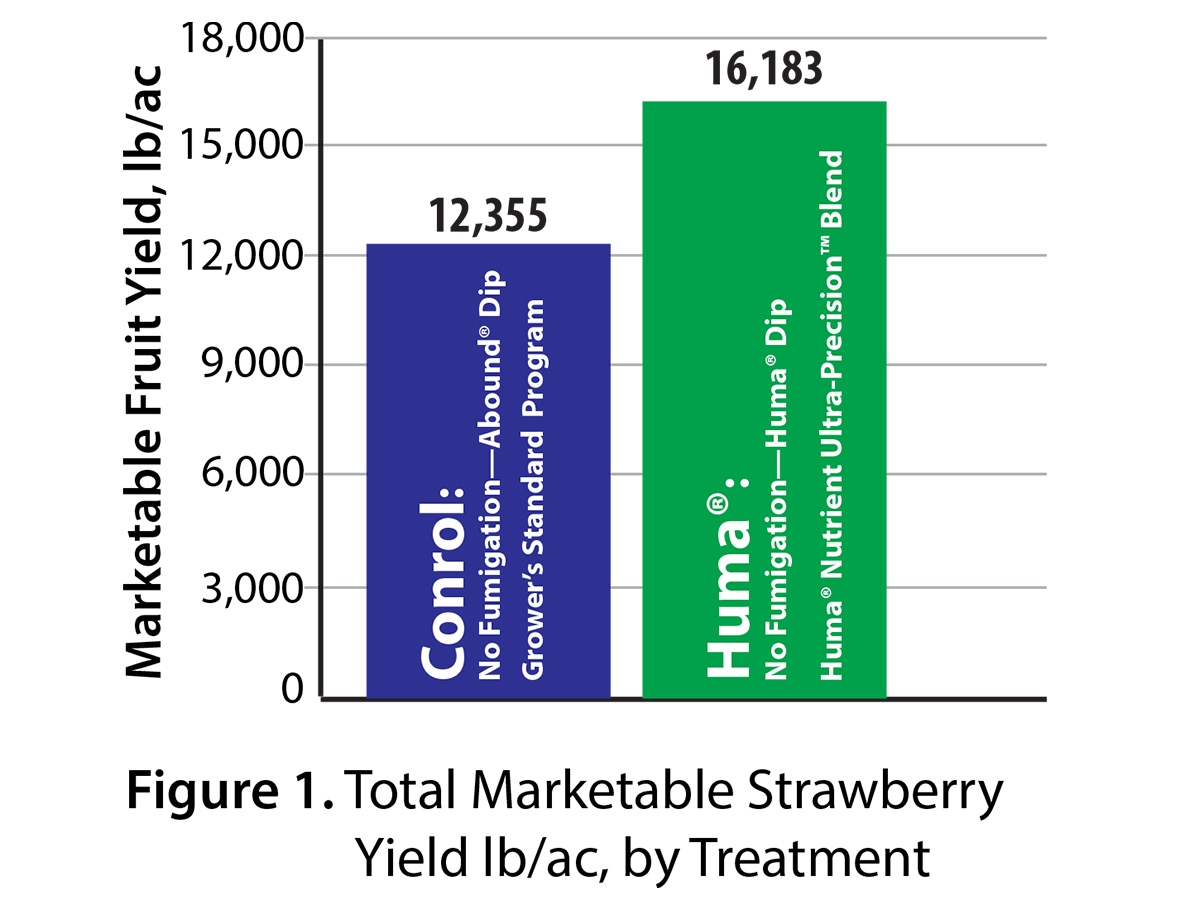Objective
The purpose of this research project was to evaluate how a special blend of fertilizer solution and a root dip made of Huma® products with Micro Carbon Technology® affect strawberry yield when compared with a control program of grower's standard fertilizer and a competitor root dip product.
Materials & Methods
Strawberry cultivar San Andreas was grown on 300-foot long bed plots at a University of California research center in Shafter, Calif., on a soil that was not fumigated. A total of two beds were used for this experiment. Each bed had six subplots of 30 ft. long with an 18 ft. buffer between each subplot. This conventional production did not receive preplant fertilizer.
At transplanting time, sprinklers provided irrigation water and then drip irrigation was used shortly after. Two root dipping treatments were tested: (1) the grower standard included 7 fl oz of Abound (azoxystrobin) fungicide in 100 gal of water for 4 minutes immediately prior to planting, and (2) the Huma® root dipping solution contained 6.4 fl oz of Breakout®, 1.28 fl oz of Promax®, 1.28 fl oz of Vitol®, and 1.28 fl oz of Zap® in 10 gallons of water for 4 min immediately prior to planting.
The grower's standard fertilizer program consisted of 20-10-0 (a combination of 32-0-0 urea ammonium nitrate and 10-34- 0 ammonium phosphate) and potassium thiosulfate applied at weekly intervals through fertigation.
The special Huma® fertilizer blend containing macro- and micronutrients plus biostimulant products, known as Ultra Precision™ Blend (UPB), was injected through drip 12 times during the growing season, while the grower standard fertilizer was applied 20 times during the same period. Two different mixtures of UPB fertilizers were used. The first blend (which was created based on needs identified by pre-plant soil analysis) was used from planting time till December, and the second blend (based on needs identified by soil and tissue analysis during active growth) was applied from December till the end of the season. UPB Blend #2 most notably contained boron, copper, and additional calcium that was not present in UPB #1.
The marketable fruit data is from only March 11 to May 11 harvests

Figure 1. Total Marketable Strawberry Yield lb/ac, March–May, by Treatment
Results
The customized Huma® root dip and Ultra Precision™ Blend fertilizer program increased marketable strawberry yield from 12,355 lb/acre to 16,183 lb/acre when compared with the grower standard program (Figure 1). Figure 2 illustrates the appearance of strawberry plants under different treatments in the month of April.

Figure 2. Photo of Control Plants and Huma® Plants in April
Conclusions
The Huma® root dip and UPB fertilizer treatment yielded 30% more marketable strawberries than the grower standard fertilizer program. The 30% yield increase due to the Huma® fertilizer regime gave a net return of hundreds of dollars per acre, with a ROI ratio of over 3 to 1.

